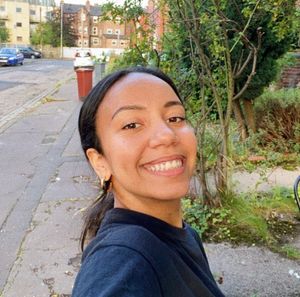It’s hard to deny that over the last few years, we’ve learned just how much of a positive impact human interaction can have on our well-being.
Losing our ability to interact and socialize freely, whenever we liked and however we wanted, made us understand what a toll it could take to not be able to connect with others as normal.
Belonging to a community, being able to engage with others, and forging authentic relationships are all critical parts of being human. So, it’s no surprise that people look for community in nearly everything they do.
Whether it’s gaming online with your friends, sharing ideas on an online forum, or connecting with others in the same job role or industry. Communities. Are. Everywhere.
But, what is it about our brains that makes us crave being a part of these connections? How does community actually impact our mental well-being?
In other words, what’s the psychology of community?
Let’s get into it!👇
Community psychology
In contrast with most psychological research, community psychology focuses on the group rather than the individual. It looks at the way an individual is affected by the communities they belong to.
When talking about community psychology, we can look at the work of Seymour B. Sarason, who’s often dubbed the ‘father’ of community psychology, thanks to his 1974 book, The Psychological Sense of Community. In it, he asserts that community is “one of the major bases for self-definition”. This book has formed the basis for the overarching concept of community psychology.
Sarason’s further work focused on acknowledging that there are outside factors to human behavior, and how being a collaborative partner instead of a lone expert is what shapes who we are.
Sarason defines a psychological sense of community as “the perception of similarity to others, an acknowledged interdependence with others, a willingness to maintain this interdependence by giving to or doing for others what one expects from them, and the feeling that one is part of a larger dependable and stable structure”.

The need to be around others and feel a part of something can have a huge impact on us psychologically. Being a part of a community allows us to benefit from others, while they also benefit from us. It’s particularly special because we feel connected to our fellow community members, and as such, feel a sense of duty to contribute to them as they do to us, in order to maintain a level of stability that all can take advantage of.
Further research from Macmillan & Chavis and their 1986 article, “Sense of community: a definition and theory”, defines community as “a feeling that members have of belonging, a feeling that members matter to one another and to the group, and a shared faith that members’ needs will be met through their commitment to be together”.
This sense of community, and feeling of dedication from members, is what keeps the community engaged and thriving. Each member commits to being a part of the group and doing their part so that all can grow and be supported.
Psychologically, being a part of a community makes us want to do better, and be engaged, for the sake of others and ourselves. Having this sense of belonging gives us a purpose, and it’s part of why we seek community in all that we do.
Social constructivism
Another important concept to note when thinking about why community is so valuable from a psychological standpoint, is social constructivism.
This theory, developed by Russian psychologist Lev Vygotsky, asserts that learning is largely dependent on our interactions with others and that human development is socially constructed.
For example, the way that a student learns is guided not only through personal research but through the guidance of a teacher and interactions with peers and other relationships. Teachers introduce and explain initial ideas, then facilitates conversations in the classroom which are central to a student’s ability to understand the idea.
One of the main pillars of social constructivist theory places emphasis on the role of the instructor (or other, more capable individuals) in how the individual learns, in what's referred to as the Zone of Proximal Development. It states that “assistance from others helps the learner to learn how to work on difficult tasks or manage anxiety and frustration in the process” (R.A. Walker, International Encyclopedia of Education, 2010).
Bringing this theory back into a community perspective, it’s this assistance that an individual can find in a community space. Specifically, in an online branded community, which is our focus here at the Community-Led Alliance. They can access information, seek advice and learn from others on how to improve. Be it in their role, or just when it comes to using a certain product or service. Likewise, they can offer their own guidance to others who may need support too.
As said earlier in our example, the conversations people have with others are also pivotal to their learning and development. Communities provide the space to have those conversations, with others in similar situations.
6 reasons why community is good for our well-being
Support
Loneliness has been a growing problem for decades, made worse so by the COVID-19 pandemic and increased isolation from our traditional support networks. In 2021, 58% of Americans said they felt lonely, and in a 2019 study, 53% said they found it difficult to find friends. So, it’s clear that now, more than ever, people need places to connect and find that support.
In a community, you have access to a support network of like-minded people. It’s a place to seek advice, share knowledge, learn more, and form new relationships.
In turbulent times, uncertainty and hopelessness have plenty of room to grow, but thriving communities can ground us and make us feel safe. The positive impact it can have on our well-being is undeniable. Not just as a member, but as a leader providing help to others.

Knowledge
Connecting with others, having conversations, and actively engaging provides endless opportunities to learn. While communities are united around a shared interest, that doesn’t mean every member will be the same. Everyone within a community will have their own unique perspective and experiences. Engaging with them can open up endless opportunities for insights and allow us to gain knowledge in ways we never thought possible.
Belonging
Intrinsic to our existence as humans comes a need to be seen and understood - a need to belong. Finding people who share our experiences, values, and interests is what reminds us of our worth and that we’re not alone.
Being a part of a community provides us with this much-needed feeling of belonging. It can empower us to do better and grow.
Influence
As a community member, you can learn from and be guided by your fellow community members. They’re like-minded people, who understand your experiences better than most, so the advice and insights you’ll gain can help you to learn, grow and improve.
As a community leader, you can learn from those enjoying the space you’ve provided. You can see everything they’re saying, know the questions they’re asking and have an insight into what they need next. Every time you engage with your community, you’ll be able to learn more about how you can improve your community, for the sake of your members - and yourself.
Sharing
Proud of something you’ve done, and want people to share it with? Community is the place to go.
Not only does the act of sharing our thoughts, ideas, creations, and knowledge do good for us, but it does good for those we share with.
Knowing people are seeing, and even benefiting, from what we share does a great deal of good for our mental health. It never hurts to know you’re appreciated, right? On top of that, you can get those engagement levels up. Plug that article, and watch the likes roll in from your engaged community of interested readers.
Networking
We’ve talked already about the worrying number of people experiencing loneliness, but a community can do so much to remedy this.
Communities invite us to connect with new people and grow our circle. This is true for personal relationships, but also for professional ones!
Online branded communities are the perfect place to meet people in similar or relevant roles to you, and forming these relationships can help you improve professionally. It’s having these contacts that can open the door to new opportunities, professional and personal.

Nurture your community, with people in mind
So we’ve established that community is an important part of being human, it’s up to you to carry that knowledge forward with you when growing and leading a community. Here are a few tips to remember about the best community management, that puts people first.
Just do it
If you’ve read this far, you know how necessary community spaces are. But their true value can’t be recognized or felt until someone takes that first step of creating them. So, just do it!
When you see conversations being had that could thrive if shared, or people who would benefit from being brought together in one space, don’t be afraid to take that leap and establish that much-needed community.
If you’ve already established a community, continue thinking about the psychological need for community and connection in the next steps that you take. Build out events and networking opportunities to increase people’s chances to form new, meaningful relationships. As pandemic restrictions ease, don’t miss out on your chance to utilize people’s desire for these spaces - and take advantage of being able to take those online spaces, back offline and in-person.
Don’t be afraid of vulnerability
While it’s built into community that the individuals keep it churning, that doesn’t mean it’s something you can set and forget. Successful communities need engaged and approachable leaders in order to keep going in the right direction. For this reason, it’s essential to get involved and to do so with an element of honesty and vulnerability.
We’ve established already that the positive impact of community on us psychologically is one of the reasons it’s so useful as a business tool. It speaks to us on a human level, and so you should be willing to connect to your members on a human level too.
While you may need to be seen as the authority at times, your members will appreciate you asking them questions, and wanting to learn just as much as they do. Plus, don’t be afraid to network and form meaningful relationships of your own.
It’s this kind of active engagement, essentially being down there in the trenches with them, that will lend itself to you later on if and when you need further help from your community members.

Stick with it
It can take time for a community to grow and begin giving back to you and your business, which is why you’ve got to stick with it in order to reap the rewards. If you’re intentional with and devoted to building and nurturing this space, your customers feel valued. As a result, you can enjoy:
- A reduced need for customer service - Your members will work together to find solutions.
- An army of brand advocates - They see and appreciate your value so they’ll spread the word.
- Honest feedback - Your members will provide actionable insights into how to improve the community so it works best for them and for you.
- Social proof - An active community acts as evidence that your customers support what you do, and can persuade potential new customers to get involved too.
- A decrease in your traditional marketing spend - With all of the above on your side, you’ll be raking in new customers without spending the big bucks on the usual marketing campaigns.
All it takes to get to this stage, is to believe in your community-led strategy. When you put people first and remember that in each step you take to scale, the value you provide will be entirely apparent to your members, and growth will follow. You’ll see the positive effect it can have on your business in no time.
In summary
When a global pandemic forces you indoors to isolate yourself from the rest of the world, it becomes clear just how much of an impact the interactions we have with those around us can affect our health and happiness.
Community-led growth strategy can be a game-changer for businesses, but it’s important to understand exactly why it’s so valuable. We know that community can have a massive positive impact on our well-being and that’s exactly why people connect with this kind of strategy so well.
It’s about adding value for members and putting them at the heart of every decision. Community benefits the individuals, the leaders, and, as a result, the businesses that choose to make community central to their growth.





